In this week’s Rocket Roundup, host Annie Wilson presents *checks notes* yet another Starlink launch from SpaceX, a Chinese launch, a crewed Russian launch, and the resulting capsule shuffle at the ISS. Plus, this week in rocket history, we celebrate the launch of Vostok 1 and cosmonaut Yuri Gagarin, the first human to travel into outer space, on April 12th, 1961.
Media
Transcript
Hello, and welcome to the Daily Space. My name is Annie Wilson and most weekdays the CosmoQuest team is here putting science in your brain.
Today, however, is for Rocket Roundup. Let’s get to it, shall we?
First up, on April 7 at 17:34 UTC SpaceX launched a Falcon 9 from SLC-40 at Cape Canaveral Space Force Station in Florida. Booster 1058 took another sixty Starlink satellites to orbit for the Starlink L-23 mission. This marks 1,383 Starlink version 1.0 satellites launched, so there are just 57 satellites — or one launch– until the first phase of the Starlink constellation is complete.
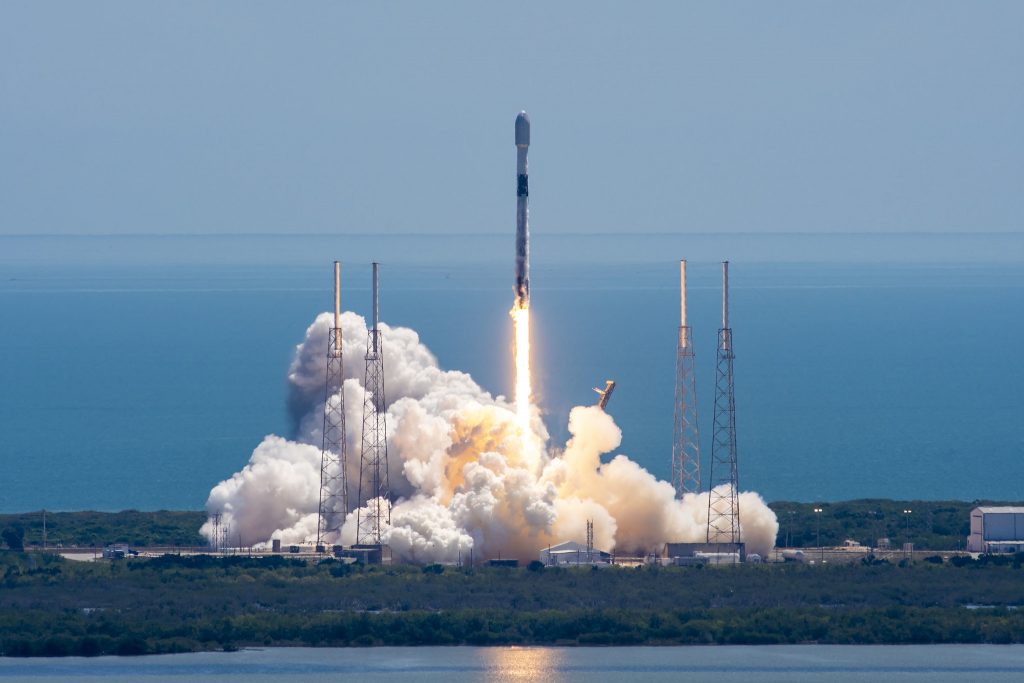
The last several launches had successful landings. Unfortunately, the video feed on the ship often cuts out which means no live video of the landings. This time, however, viewers were treated to video from both the droneship and the booster throughout the landing. The camera feed on the droneship was briefly interrupted by the usual rocket plume interference which resulted in an odd side-by-side image showing the booster on one side of the screen while the other side was just an empty barge because the video feed was lagging.
For those of you keeping score at home: this was the seventh mission for this particular booster, and both of the fairings were reused. One of the fairing halves was on its fourth flight while the other was on its second flight.
Booster 1058 successfully landed on the droneship Of Course I Still Love You. Only one fairing half was recovered by SpaceX’s new recovery ship, the Shiela Bordelon. This was the seventeenth fairing half SpaceX has successfully recovered.
As of press time, both GO MS Chief and GO MS Tree had their fairing-catcher nets removed and were heading back to their owners in Louisiana. Together, they have successfully caught nine fairing halves out of eighteen catch attempts.
Next up, on April 8 at 23:01 UTC, a Chinese Long March 4B successfully launched the Shiyan 6-03 satellite into orbit from the Tàiyuán Satellite Launch Center in northern China. Several days before the launch, a sandstorm caused a delay in assembling and testing the rocket, but on launch day, the weather was favorable with clear skies.
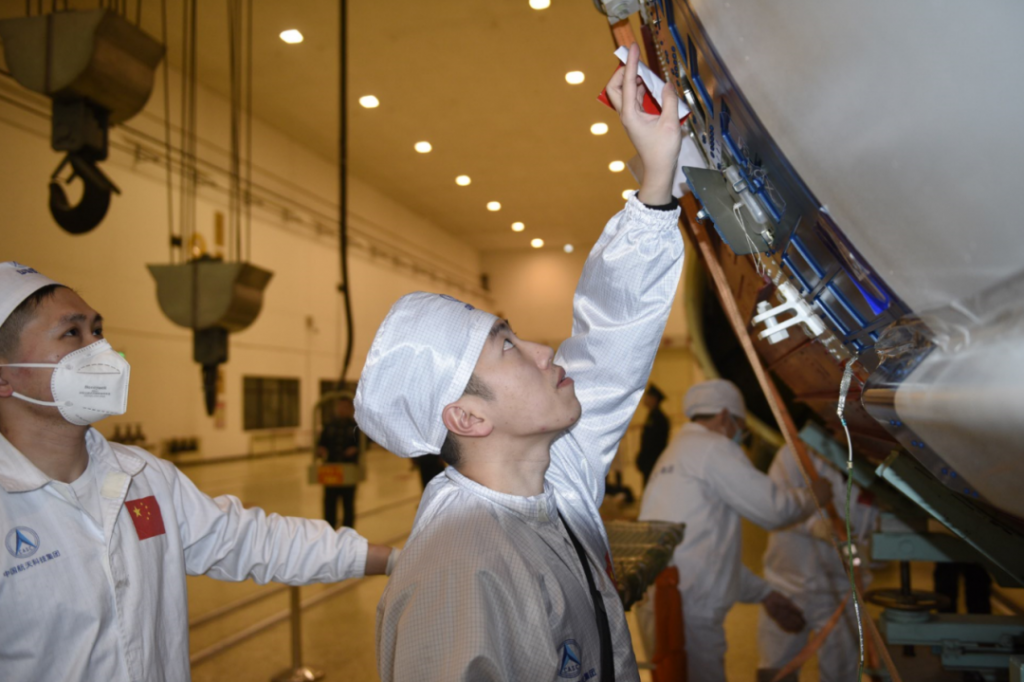
According to the builders of the satellite, the China Academy of Sciences, the satellite will be used for “space environment detection and related technology experiments.” It was launched into a 1000km orbit inclined at 99.5 degrees. According to Gunter Krebs, who keeps detailed notes on various spaceflight info for his website, Gunter’s Space Page, this is a higher orbit than the previous two Shiyan 6 satellites that were launched in 2018 and 2020, respectively.
China’s National Center for Nanoscience and Technology also announced that one of the demonstrations aboard the Shiyan satellite is a new “nanocomposite ultra-black coating… that can absorb up to 99.6% of light in the ultraviolet to near-infrared spectrum”. Based on this source, our research team believes Shiyan 6 03 is testing imaging reconnaissance technology with stealth features. The US was rumored to operate a satellite somewhat like this called Misty. Misty was launched in 1990 on STS-36 and spent at least 7 years in orbit but hasn’t been seen by observers since 1997.
This launch marked the 365th launch of a Long March series rocket and the 41st launch of a Long March-4B.
For our last launch of the week, on April 9 at 07:42 UTC, a Soyuz 2.1a launched with the Soyuz MS-18 spacecraft carrying two Russian cosmonauts and one NASA astronaut to the International Space Station.
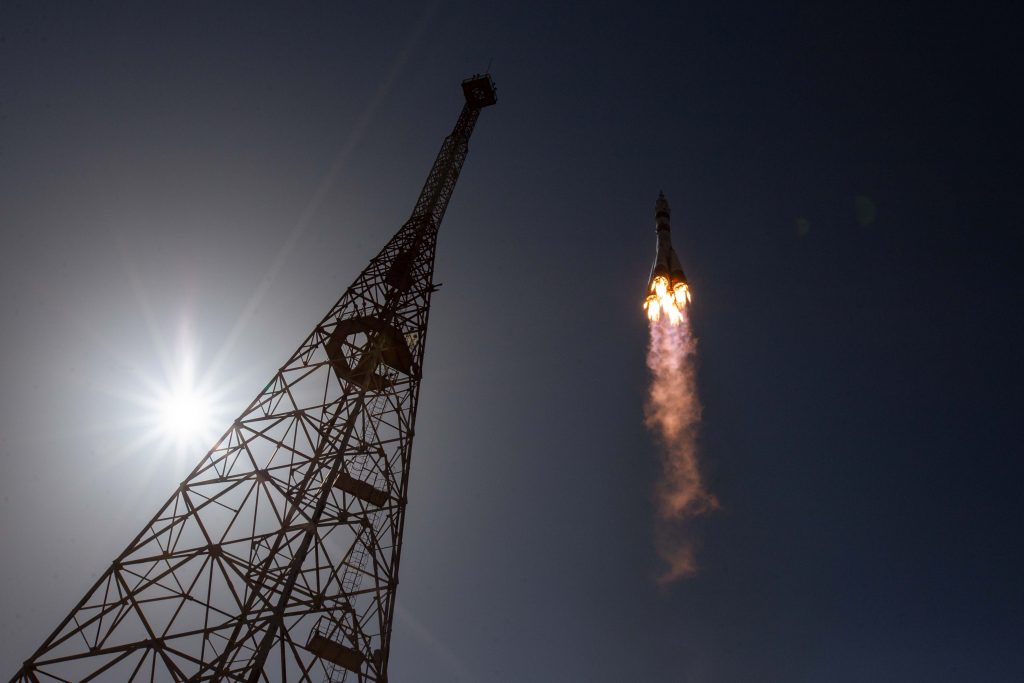
Both the spacecraft and the rocket are named Soyuz, which means “Union” in Russian. Why?
A Soviet tradition was to name the rocket after the first payload it carried into orbit. The first payload of this version of the R7 (for the rocket nerds, that’s the standard core and boosters with a new Blok I upper stage) carried into orbit in 1966 was a Soyuz, so that’s what they named it. You also see this with the Proton rocket after it launched the astrophysics satellites of the same name.
This marked the 1,937th launch of an R7-derived Soyuz rocket. JAXA astronaut Soichi Noguchi took a picture of the rocket’s contrail as it ascended, which he posted to his Twitter account.
The spacecraft was successfully placed into orbit on the new three-hour rendezvous trajectory, arriving at the station’s Rassvet module at 11:05 UTC. Soyuz MS-18 is only the second crewed Soyuz to use this trajectory, with Soyuz MS-17 being the first back in October 2020. It was demonstrated on several uncrewed Progress spacecraft first, in the Russian philosophy of incremental testing. The three-hour rendezvous requires exceptional orbital insertion accuracy from the launcher, and the ISS has to be in a very specific orbit.
Roscosmos goes to all of this trouble because the Soyuz is a very cramped spacecraft and prefers the crew to spend as little time in the confined space as possible. Back in the 1970s, the standard rendezvous to the Salyut stations took two days or more.
After two hours of leak checks, Mark Vande Hei, Oleg Novitsky, and Pyotr Dubrov entered the ISS and joined Expedition 64, temporarily increasing the number of crew members on the ISS up to ten.
This is Vande Hei’s second spaceflight, Novitsky’s third, and Dubrov’s first. The trio will spend the standard six months in orbit before returning. Notably, Dubrov and Novitsky will perform a series of spacewalks to integrate the Nauka module to the ISS when it finally docks to the ISS later in 2021.
Soyuz MS-18 was originally slated to fly with three Russian crew members for the arrival of Nauka, the next Russian module for the ISS. At the last minute on March 9, American astronaut Vande Hei was added to assure the backup capability in the event of a problem with any crew spacecraft or an emergency aboard the station that requires a crew to return to Earth sooner than planned.
Vande Hei’s seat was procured under unusual circumstances. When I talk about a seat, I don’t mean the physical seat that the astronauts ride in; it’s just a shorthand way of saying a ride to and from the space station. Axiom Space had bought a seat on a Soyuz from Roscosmos with the intention of sending one of their engineers up to their future module. That module will be attached to the ISS sometime between now and 2024. But because Vande Hei was needed on the station and the Axiom Space module isn’t in space, NASA proposed a trade: this seat on the Soyuz in exchange for a seat on a future Crew Dragon or Starliner mission.
Soyuz MS-17 will return to Earth on April 17. SpaceX’s Crew-2 will launch in late April while Crew-1 is still at the station. This will increase the station’s population from seven to eleven. Crew-1 will return to earth once Crew-2 has arrived and settled in.
On April 5 at 11:00 UTC, Astronauts Hopkins, Glover, Walker, and Noguchi of the Crew-1 Dragon Resilience climbed back into their spacecraft and undocked. But they aren’t coming back to Earth — not just yet, anyway. Commander Michael Hopkins flew the spacecraft around 90 degrees to the International Docking Adapter-3 (IDA-3) port on the zenith, or space-facing, side of Node 2 on the ISS. In the reference frame of the ISS, Node 2 is the front of the ISS. The reason for this move was to free up the IDA-2 port on the forward side of Node 2 for the upcoming Crew-2 spacecraft. The Crew-2 spacecraft is only programmed to dock on this port, so the Crew-1 spacecraft needed to move.

All four astronauts suited up and boarded the spacecraft for the relocation in case of an emergency that would prevent it from being able to dock again. It’s standard practice for all crewed spacecraft relocations to suit up and be prepared to return to Earth if something goes wrong when changing parking spaces. Fortunately, they had no problems and after 45 minutes of free flight Dragon Resilience docked to IDA-3.
Another reason for the move is the upcoming CRS-22 mission. This Cargo Dragon will be bringing up a pair of new solar panels for the ISS and the Canadarm cannot reach the Dragon’s trunk if it is docked at IDA-2, so it will dock at IDA-3 in June 2021.
According to Scott Manley, this was only the third time a crewed spacecraft had docked to Pressurized Mating Adapter 3 (which IDA-3 is attached to). The others were Endeavour on STS-97 and Atlantis on STS-98 in 2000 and 2001, respectively.
This Week in Rocket History

This past Monday marked a special milestone in spaceflight history.
Sixty years ago on April 12, 1961, at 06:07 UTC, Vostok 1 launched from Baikonur Cosmodrome in what was then the Soviet Union. Aboard Vostok 1 was cosmonaut Yuri Gagarin, the first human to travel into outer space. The mission consisted of a single orbit around the Earth, lasting 108 minutes from launch to landing and skimming the upper atmosphere at 169 kilometers at its lowest point.
Preparations for the historic flight began the day before with the Vostok-K rocket and attached Vostok 3KA space capsule transported in a horizontal position to the launch pad. Technicians conducted a quick examination of the boosters and once everything looked good to go, Gagarin and backup cosmonaut Gherman Titov were given a final review of the flight plan.
It was decided that the launch would occur at 09:07 Moscow Time the following day. This specific time was chosen so the solar illumination would be ideal for the orientation system’s sensors as the capsule started to fly over Africa, which was when the retrorockets would need to fire for re-entry.
Prior to the flight, Gagarin was examined by a team of doctors. One of the doctors, Ada Kotovskaya, recalled: Gagarin looked more pale than usual. He was unsociable and quiet, which was not like him at all. He would answer by nodding or a short ‘yes’ to all questions. Sometimes he would start humming some tunes. This was a different Gagarin. We geared him up and hugged. And I said, ‘Yuri, everything will be fine.’ And he nodded back.
The iconic “CCCP” on Gagarin’s helmet was hand-painted by engineer Gherman Lebedev on their way to the launch site. Lebedev’s reasoning for doing so was that given the U-2 plane incident less than a year prior, there was a small chance that without some country identification Gagarin could be mistaken for a spy upon landing.
The mission itself was designed to be controlled by either automatic systems or ground control, meaning the capsule’s manual controls were completely locked. This was at the recommendation of medical staff and spacecraft engineers who were unsure how a human would react to weightlessness. According to Vostok’s chief designer Oleg Ivanovsky, a code was given to the cosmonaut to unlock the controls in case of emergency.
Tension was high the morning of the launch, with Chief Designer Sergei Korolev reportedly suffering from stress-induced chest pains because up until this point Soviet space launches had only a 50% success rate. How this launch was going to go was anyone’s guess!
Gagarin entered the Vostok 1 spacecraft around 07:10 local time — or 04:10 UTC — and after a series of tests and checks lasting about forty minutes, the hatch was closed. Gagarin soon reported that the hatch was not sealed properly, and technicians scrambled to fix the problem. Ivanovsky personally helped rebolt the hatch. During this time, Gagarin was described as appearing calm. Sensors recorded his pulse at a low 64 beats per minute as he listened to music play over the radio.
Finally, at 6:07 UTC, Vostok 1 lifted off from Baikonur Cosmodrome Site Number 1. Korolev radioed to wish Gagarin a good flight, to which Gagarin replied “Poyekhali!” (“Let’s go!”) The four strap-on boosters, the rocket‘s core stage, and the final rocket stage all performed successfully. As the rocket passed over central Russia, Gagarin radioed in, “Everything is working very well. All systems are working. Let’s keep going!” and at 6:17 UTC the rocket’s final stage shut down, and Vostok 1 — carrying the first human into space — reached orbit. Ten seconds later the rocket separated from the capsule.
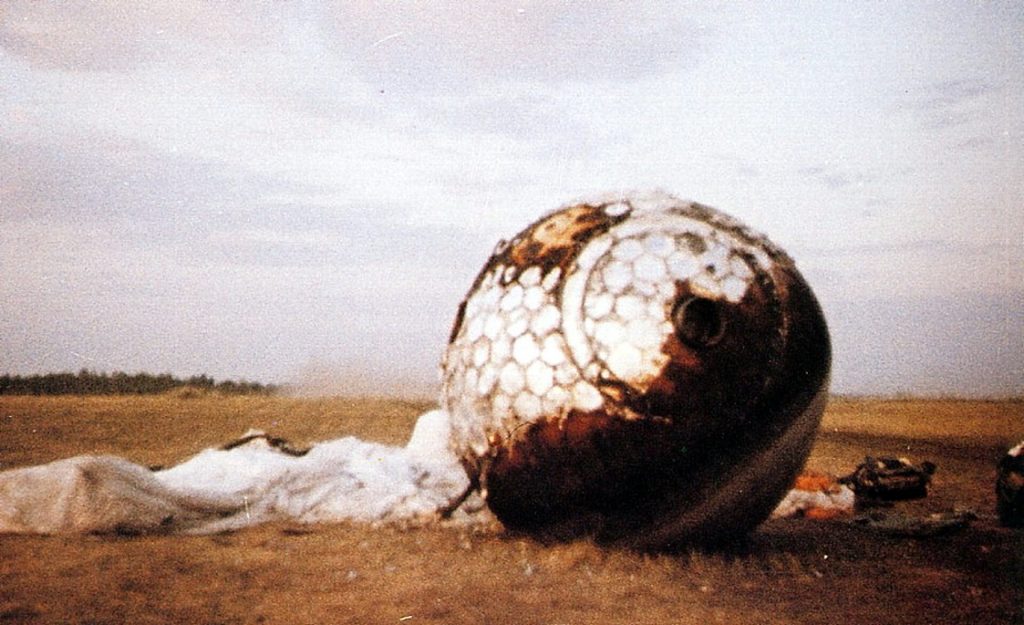
After a little over one hour in orbit, Vostok’s automatic systems brought it into the required attitude for retrorocket firing over the west coast of Africa, approximately 8,000 kilometers up range of the landing point. When the command was sent to separate the Vostok service module from the reentry module, the equipment module remained attached by a bundle of wires, causing strong gyrations that shook the spacecraft. The wires eventually broke, causing the modules to finally separate, which stabilized the spacecraft. Gagarin experienced around 8 Gs as his descent continued.
Gagarin ejected from the craft while it was still at an altitude of seven kilometers, his parachute deploying almost immediately. Ten minutes later he was safely on the ground, 41 kilometers from Engels in the Saratov region. A young girl named Rita Nurskanova and her grandfather witnessed Gagarin’s descent. He later recalled his encounter with them, saying, When they saw me in my space suit and the parachute dragging alongside as I walked, they started to back away in fear. I told them, don’t be afraid, I am a Soviet citizen like you, who has descended from space and I must find a telephone to call Moscow!
Statistics
To wrap things up, here’s a running tally of a few spaceflight statistics for the current year:
Toilets currently in space: 6: 3 installed on ISS, 1 on the Crew Dragon, 1 on each Soyuz
Total 2021 orbital launch attempts: 30, including 1 failure

Total satellites from launches: 751
I keep track of orbital launches by where they launched from, also known as spaceport. Here’s that breakdown:
USA: 12
China: 9
Kazakhstan: 4
New Zealand: 2
Russia: 2
India: 1
Random Space Fact
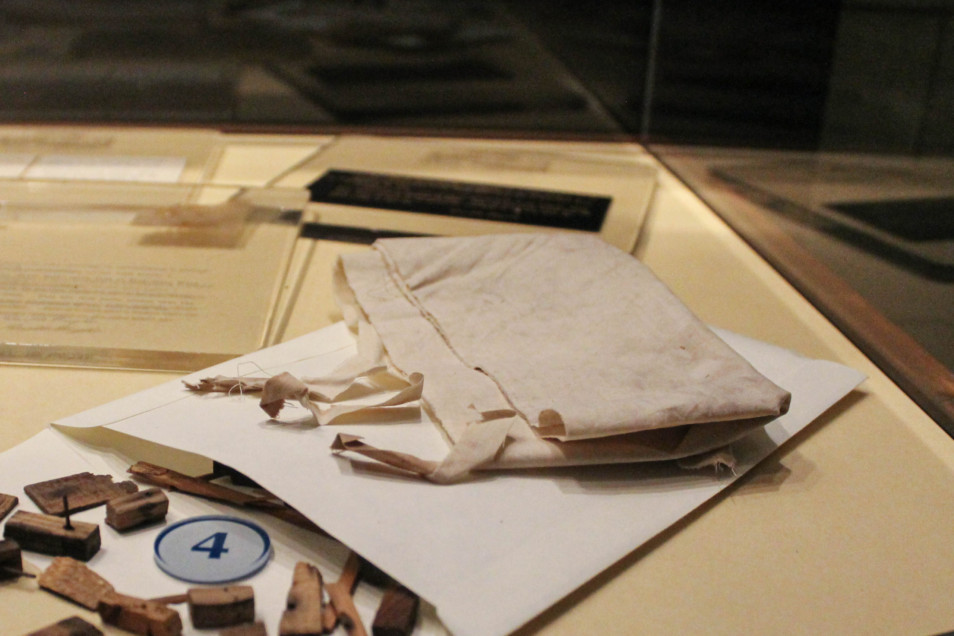
Your random space fact for this week is that Ingenuity — you know, the space helicopter — carried a small piece of aviation history to Mars. Taped to a cable below its solar panel is a postage-stamp-sized piece of muslin fabric from the very first plane to make a successful powered heavier than air flight: the Wright Brothers’ 1903 flyer. Two other fragments of the 1903 Flyer went to space. Neil Armstrong carried a piece on Apollo 11 and John Glenn took a different piece with him on STS-95. Ingenuity will make its flight soon, and we’ll have coverage of that here on CosmoQuest after it occurs.
This has been the Daily Space.
Learn More
Oh, Look! SpaceX Launched More Starlink
China Launches Third Shiyan 6 Satellite
- CASC press release (Chinese)
- Shiyan 6 info page (Gunter’s Space Page)
- NCNT press release (Chinese)
- Launch video
Soyuz MS-18 Mission Carries Three to ISS
Crew-1 Shuffles Spacecraft to Different Node on ISS
This Week in Rocket History: Vostok 1 and Yuri Gagarin
- Challenge to Apollo: The Soviet Union and the Space Race, 1945-1974 (NASA) (pdf)
- Celebrating a star: 50 years since Gagarin’s spaceflight (RT)
- Where did the USSR inscription on Gagarin’s helmet come from? (Pikabu archive) (Russian)
- Oleg Ivanovsky, Soviets’ Space-Age Designer, Dies at 92 (The New York Times)
- “Then Yura returned to earth not from space, but from the other world!…” (Russian Birch) (Russian)
- Star Flight of Yuri Gagarin (Central Committee of the CPSU) (Russian)
- VIDEO: Yuri Gagarin: Sixty years since the first man went into space (BBC)
Random Space Fact: Part of Wright Brothers’ Plane Flies Aboard Ingenuity Helicopter
- Part of Wright brothers’ 1st airplane on NASA’s Mars chopper (AP)
- Carillon Historical Park has partnered with NASA to help make history on the surface of Mars (Dayton History)
Credits
Host: Annie Wilson
Writers: Elad Avron, Dave Ballard, Gordon Dewis, Pamela Gay, Beth Johnson, Erik Madaus, Ally Pelphrey, and Annie Wilson
Audio and Video Editing: Ally Pelphrey
Content Editing: Beth Johnson
Executive Producer: Pamela Gay
Intro and Outro music by Kevin MacLeod, https://incompetech.com/music/


 We record most shows live, on Twitch. Follow us today to get alerts when we go live.
We record most shows live, on Twitch. Follow us today to get alerts when we go live.